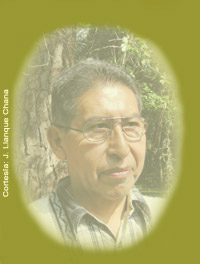|
EL AUTOR
Justino Llanque Chana nació en la villa de Suqa-Acora en el Perú. Realizó estudios en la Universidad Nacional del Cusco y Normal San Juan Bosco de Salcedo, ambos en Perú. Hizo estudios graduados en los EE.UU. en Antropología Lingüística y bibliotecología en la University of Florida y Florida State University, respectivamente. También, hizo estudios graduados en administración educativa en Andrews University en Berrien Springs, Michigan. Es miembro de la Academia Peruana de la Lengua Aymara (APLA), institución que promueve el desarrollo de la literatura Aymara y la concientización de la identidad Andina.
J. Llanque ha participado como especialista en la enseñanza de la lingüística Aymara desde enero de 1976. Actualmente, labora en la colección Latinoamericana de la University of Florida, forma parte del equipo de Proyecto Aymara que ofrece la enseñanza de la lengua en el Internet y continúa con las investigaciones lingüísticas y antropológicas para producir materiales en el área de lingüística histórica Aymara.
OTRAS ENTRADAS
EN
COLABORACIONES
COMUNÍQUESE CON EL AUTOR

 COMENTARIOS COMENTARIOS
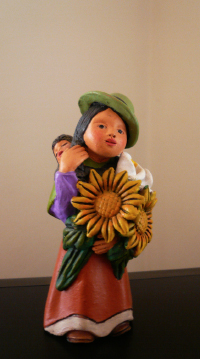
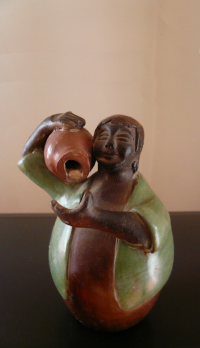
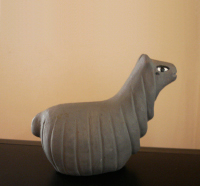
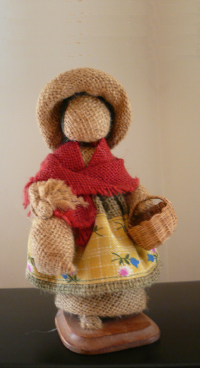
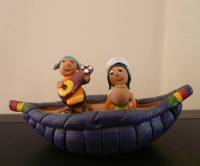
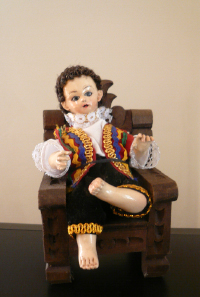
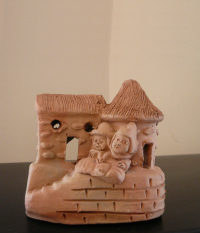
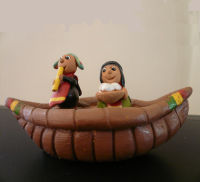
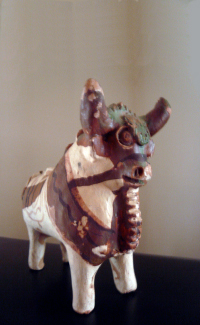
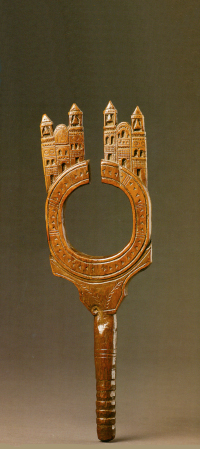
|
Hispanic and Andean chroniclers have left important documents about the diversity of languages and cultures that populated diverse ecological zones and regions of the southern Andes. The Jesuit Ludovico Bertonio, in his work Vocabulario de la lengua Aymara, published in Juli, Peru, in 1612, presents us with a list of nations and different peoples who have a great variety of languages. Only in the Inca region of Qullasuyu did there exist small kingdoms such as Canchis, Canas, Collas, Lupakas, Pacajes, Soras, Carankas, Quillaguas, Lipiz, and Chichas among others. Each one of these kingdoms was organized politically and economically. In addition, another noted chronicler, Cieza de León, marveled at the number and variety of inhabitants of the city of Cusco. In that city, there existed representations of other nations like Chile, Pasto, Canaris, Chachapuyas, Huancas, Qullas, and more tribes representing the other provinces of the Empire (Cieza de León, 1553).
In the vast territory of the Andes there were many nations and languages that existed in reciprocity and complemented each other. The Mochi, Tiwanaku, Wari and Incas practiced policies that harmonized social relations, oriented in terms of economic and environmental resources, by employing the mit’ma system (shift work). For regions that did not have sufficient resources for agriculture or livestock, the Inca administration prepared places and lands with sufficient resources for the welfare of the Ayllus (communities) that were then relocated there. In this way ethnic groups were set up and developed communally in newly colonized lands and these also in time became diversified in their languages and traditions. Contemporary Andean research estimates that in all the Tahuantinsuyo (Inca Empire) of the Incas more than 500 languages and cultures were in existence (Murra 1975).
According to Andean orography, Pachamama (Mother Earth) even today makes it possible for ecological niches (terraces), to shelter and preserve other hundreds of varieties in the vegetable, animal and mineral kingdoms. Andean natives are aware of all the diversities offered by Mother Earth; even today for these gifts they still offer rituals of thanks to the deities as protectors of all lives. Andean geography is one of the determinants that generated the different niches or ecological zones at different elevations and temperatures, as described by the geographer Javier Pulgar Vidal. According to Pulgar Vidal’s research, there are 96 areas of natural life and biodiversity so wide that they make Peru one of the countries with the most natural resources on the planet. In addition, his research corrects the traditional division of coast, mountains, and jungle with its detailed study of geography, with eight regions of diverse and complex orography in Peru: Chala (Coast), Yunga, Quechua, Suni, Puna, Jank'a (Cordillera), Ruparupa, High Jungle (Amazonia) and Low Jungle (Javier Pulgar Vidal, 1981).
When it comes to religious beliefs, the Mochica, Tiwanaku, Wari and Inka, did not have a policy of globalization that sought uniformity in a world as diverse as it was. In their jurisdictions they tolerated diversity of beliefs, variety of languages, and many economic and cultural forms; These cultures flourished in a climate of mutual cooperation despite its abrupt geography and various customs. The inhabitants were heterogeneous even in their religious beliefs. The chronicler Santa Cruz Pachacuti Yamqui describes in his chronicles the Andean deities on a cosmogonic map (Urbano 1992). The Andean conception interpreted by the native chronicler is a worldview on beliefs in those times. The temple of Qurikancha in Cusco was filled with deities represented with symbols that reflected their conceptions about the Andean religion. The list presented to us on the cosmogonic map begins with Waricocha (creator), then continues with Inti (sun), Qilla (moon), Illapa (lightening), Quyllur (Venus), Pachamama (Mother Earth), and Apache Ururi (Morning star) among others. Today these same deities survive in the minds of the Yatiri (native priests) and Amauta (Andean wise man). Religious rituals are still celebrated by spiritual leaders who invoke their deities to ask permission and to thank them for the kindness offered to them by Pachamama (Mother Earth). For the Andean cosmovision, each mountain, spring, lake, hill, river, among others, is a residence of an apu (protective deity), and each has its wak'a (sacred deity). The Andean world is megadiverse in all aspects both in the past and in the present.
Mallku (Condor)
Andean cultures through time developed traditions congruent with their habitat, traditions as complex as the Andes. The Mallku (Condor), Sacred Bird, continues to monitor the varieties in the Andean skies. Its Jaqiaru etymology gives us Khunt'uri: Khunu (Snow) nominal root, and T'uri (Mash, chew) third-person verb; Its linguistic analysis shows that the lexeme Khunt'uri (Condor) inhabits the high peaks of the Andean snow, taking the name of the deity Mallku as sentinel (guardian) and guide. The indomitable Puma Guardian continues to reign in the world of the Andean Animal Kingdom; another deity, the Ukuku (Andean bear) is another protected mammal in danger of extinction. Thanks to their biodiversity these species still survive; but life is not guaranteed in spite of the rich Andean traditions of conservation.
Awkiniri
Another of the successful traditions of conservation is the modality of Awkiniri (Auquenido) protected by the Awki deity. We will illustrate this word awki.ni.ri: Awki is the nominal root, -ni is a possessive morpheme, the suffix -iri is the nominalizer) of the Jaqiaru language; the meaning of awkiniri reveals the following: Awki (guardianship deity of all living beings). The analysis of this word asserts that the Andean people forged traditions and beliefs very concorded with their environment for the conservation of biodiversity. The Awki not only shelters and protects the allpaqas (alpaca), Qarwa (llama), Wari (Vicuña), Wanaku (Guanaco), but also protects all biodiversities by the deities. The denominations Awki, Apu, Wak'a, Inti, among others, are protectors of the living beings in the Andean world: if there is a transgression against one of the protected ones (Awkiniri) it would alter the balance of harmonious life. Therefore. it is necessary for the community to do a reflection and correction. Consequently, it is propitious to settle community accounts in the sacred enclosure called Apachita (Apayasita), which is a place to make ritual ceremonies with the sacred leaf of the Quqa (coca) and the aromatic herb of Q'uwa for the wellbeing of the community. This is the traditional custom that governs the life of good Living (suma qamaña) in the Andean communities until today.
As far as languages are concerned, today the Aymara language with four varieties is still spoken and scattered in several regions. The Quichua language has more than 20 varieties that are still spoken according to Torero (1974), and the Amazonian languages that are still spoken are scattered and include more than 50 varieties. In this multicultural universe, these peoples harmonized their socio-economic and political differences with traditional norms of communal work, such as mink'a (relief work), ayni (Mutual assistance work), yanapa (voluntary assistance), jayma (communal benefit work), Jalxata (temporary assistance), and Qurpaña (lodging for the traveler) among others. These principles of generosity, solidarity and reciprocity are still practiced as traditional norms and customs that maintain socioeconomic relationships between all the inhabitants of different ecological zones.
Andean Potato as Deity (Mamata)
Among the classic examples of biodiversity in the Andes, we have the Andean potato that has hundreds of varieties and that are cultivated at different altitudes and in different ecological niches and terraces. Experts in the cultivation of Andean potato estimate that in the southern region of Peru there are still more than 400 varieties of potato and these same species of potatoes were domesticated precisely by our Andean ancestors at the dawn of the Andean history around Lake Titicaca (Reader, 2009).
When the Spaniards invaded the Andes in the 16th century, they were surprised to discover that the potato tuber was one of the most important food resources for the peoples who lived in those regions. With the passage of time, the Andean potato reached other parts of the world. Above all a variety of the potato was adopted by the Irish in the eighteenth century; this variety was adopted and cultivated for decades as Ireland’s own essential food resource, and this variety was called the Irish potato. The Irish never imagined that this important food would be affected by a plague (fungus) that the experts called Oomycete Phytophthora infestans. This disease destroyed all the of the Irish potato fields that had been cultivated very diligently by the people of that nation. In 1845, the whole country was devastated by famine that gripped entire communities from 1845 to 1849. When the harvest season arrived, potato crops were completely destroyed by the fungus. Thousands of people died for lack of this food; their weakened bodies were easily attacked by disease. Many human lives were lost because of this great famine including the lives of their domestic animals that depended on this important food. At that time, because of this tragedy, thousands of inhabitants emigrated to other foreign lands until Ireland became severely depopulated (Lyons 2002).
What had happened that would cause Ireland to entrust so much to an Andean tuber? Well, the number of potato varieties that they had adopted from the Andes was precisely one. And this variety had been acclimatized and proliferated evenly throughout Ireland without any other variety. The disease that had attacked that single variety had also been concentrated with all its potential and had no alternative but to sacrifice this single variety of potatoes. This is the story of the Andean potato without varieties cultivated in a faraway and unaided land so that the world can attest to the tragedy of the Irish potato.
This very case is explained by the geneticists and botanists that uniformity, with only one species, monoculture of any variety, is doomed to perish because of its impoverished variation; the absence of genetic diversity leaves the orphaned variety vulnerable to diseases, such as the one that devastated the Irish potato. If this variety of Irish potato had had at least one collateral variety at its side, it would have been helped and preserved -- as with other varieties of potatoes in the Andes -- through pollination and other procreative means. This is because the vigorous species revives the other weakened variety through the miraculous process of natural pollination; this process generates another variety even stronger than the diseased ones.
Today, the potato of Andean origin remains a valuable food for thousands and even millions of people in the world. For this reason, the Andean peoples revere this tuber as an essential resource in their gastronomic and cultural traditions. The ritual that honors the Mamata (deity of the potato) is of special importance, where, during the harvest, the seeds of diverse and exotic forms of potato are selected for this annual rite; for the ritual, these potatoes are placed on a special cloth called an Istalla. The potatoes are arranged in a row and connected by a string. One special potato representing the Mamata (main deity) is placed in the center of the Istalla surrounded by other potatoes; this Mamata potato, by Andean custom, is the one used to initiate cheering when drinking the Andean liquor called Chicha or K'usa. In this way the importance of the potato is exalted in its role as sustainer of Life (Llanque 1974). In this world of biodiversity, the potato is not the only tuber appreciated in the Andes; there are other varieties of tubers that are of equal importance, such as the Isañu (Isaño or Mashua), Illaku (Olluco), Apilla (Oca) and others.
Andean Cereals and other traditional foods
In addition to the potato and other tubers, there are the Andean cereals. Among the Andean cereals, the Jirwa (quinoa in Spanish) plant possesses many varieties that today enrich the gastronomic world with their rich nutritional value.
We also have other traditional foods in the Andes; for example, in the Andean gastronomic area we have Andean recipes for the Sipichi or Sipicha (Sebiche, ceviche) a traditional dish and symbol of exuberance; for its preparation it includes products from different ecological zones: fish of the sea; corn and the potato of Andean valleys; Yucca of the Amazonian jungle, and chili, lemon and onion of the Cisandian valleys in the Andes. The phonemic etymology of the Jaqiaru language for Sipichi/Sipicha: Sipi is the verbal root of the verb sipiña (to shred meat from the bone), and its linguistic declinations are Sipichiri, Sipichaña, Sipiri and others. The suffix chi is a verbal inflection. Its literal meaning is to defiber, disintegrate, the fish or meat in small pieces, leaving only bones, as do the birds of prey. This traditional dish Sipichi/Sipicha (Sebiche) is an effective symbol of Andean gastronomic biodiversity. Another classic example of similar importance is the recipe called isk’awichhi (escabeche) a mixture of vegetables and some meat: isk'a (small quantity), Wichhi (additives). Its literal connotation is a bit of all varieties.
In summary, the region known as the Andes comprises a multicultural universe of exuberant biodiversity: we should not continue to evoke the policies of uniformity, globalization and homogeneity. We have to revise our history with authentic and genuine rigor, to demonstrate that our Andean ancestors lived and flourished in diversity, developing civilizations that the world continues to admire today.
Andeans are heirs to the diversity of resources that are vital to their prosperity. The Andean multicolored flag, Wiphala, represents Andean cultural roots. It demonstrates that in the Andes, in the past and in the present, the Wiphala represents different nations included in a multicultural, multilingual and mega diverse group of nations (Echiade 2010). Andean ancestors considered that diversity was, and is, a reserved wealth that can be called upon to solve problems in a world of geographical, cultural, and linguistic diversities. The Andean forefathers were confident and resolved to live harmoniously with diversity. Diversity was not an obstacle — or harmful — but instead formed a still- treasured resource of incalculable value for the general welfare and Suma Qamaña (good living) of the people.
From the beginning of the Spanish conquest our Andean history has been plagued by social, economic, and political tragedies; because of resources in the Andes, greedy oppressors, and totalitarian exploiters were attracted. In colonial times, foreign invasions caused destruction of many of the existing cultural values and natural resources; biodiversity was limited and mutilated. The foreign colonizers who came at that time were controlled by the sovereigns of their countries of origin; they came with a medieval mindset which they imposed unilaterally. The people were forced to submit to the foreigners’ economic, political and religious system and their one absolute political domain. They imposed inquisitorial policies; they pursued and executed anyone who practiced other beliefs, languages or customs which they called pagan. The Andean people found themselves under tyrannical policies and had no other alternative than to appear as though they accepted what for them was an abstract religion, and a foreign language; they had to submit to a phantom monarch who existed beyond the oceans (allendel mar).
Today in a democratic environment the Andean people can talk about decolonization, they can promote policies of cultural diversity, linguistics, thereby vindicating the traditional wisdom of our peoples, tolerating and respecting differences to reaffirm integral and sustainable development. They are no longer oblivious to diversity, nor multiculturalism, much less to multilingualism. Our Andean ancestors triumphed in diversity. They enriched one another thanks to their policies of plurality and diversity; they solved their problems of hunger and poverty, as the historical chroniclers attested. Diversity can provide hope and a way to solve our socio-economic problems; diversity — which still exists — can provide the whole world with redeemable resources that can help to get out of the global crisis that ails us.
Some Andean/Amazonian countries — such as Bolivia, Ecuador, Brazil, among others, that have imbalances and losses of their natural resources because of exploitation and irrational destruction — are now directing their environmental policies to protect and conserve biodiversity. However, after centuries of colonization, the old exploitation policies of uniformity, globalization, and homogeneity are still overwhelmingly present today. Faced with the menacing reality of diversity loss, the only viable alternative is to conserve, recover, rebuild, and practice the traditional Andean norms that our ancestors had. Otherwise, we will continue to lose the exuberant richness our ancestors had that enriched life in general.
By promoting diversity, by respecting other ways of solving problems, by communicating and promoting more dialog, society can retain those values of our traditional Andean culture that still work well for us now and in the future. This can be done while still remaining in harmony with the Sacred Principles of Human Rights as the declared at The United Nations.
REFERENCES
Bertonio, Ludovico, 1984 (facsímile de original publicado en 1612): Vocabulario de la lengua aymara, en Serie Documentos Históricos, No. 1. Cochabamba, Bolivia: Centro de Estudios de la Realidad Económica y Social.
Cerrón Palomino, Rodolfo, 1987: Lingüística Quechua. Cusco, Perú: Centro de estudios rurales andinos “Bartolomé de las Casas”.
Cieza de Leon, Pedro de, 1959 [1553]: The Incas of Pedro de Cieza de León, translated by Harriet de Onis, edited by Victor Wolfgang von Hagen. Norman: University of Oklahoma Press.
Echiade, Javier, enero 20, 2010: “El Significado de La Wiphala”. En:
http://javierechaide.blogspot.com/2010/01/el-significado-de-la-wiphala.html (Ingreso: 25/08/2015)
Guibert, Rita, 1974: Siete Voces. Mexico DF: Editorial Novarro, S.A.
Llanque-Chana, Justino, 1974: “Religiosidad en la Agricultura Aymara”, tesis, Normal Superior de Varones, ‘San Juan Bosco’, Salcedo, Perú.
Lyons E., Mary, 2002: Feed the Children First: Irish Memories of the Great Hunger. New York: Atheneum Books.
Murra, John, 1975: Formaciones económicas y políticas. Instituto de Estudios Peruanos: Lima, Perú.
Paz, Octavio, 1997. El laberinto de la Soledad. New York: Penguin Books.
Pulgar Vidal, Javier, 1981: Las Ocho Regiones Naturales del Perú. Editorial Universo. Lima, Perú.
Reader, John, 2009: Potato: A History of the Propitious Esculent. New Haven: Yale University Press.
Torero, Alfredo, 1974: El Qhichua y la Historia Social Andina. Lima: Universidad Ricardo Palma.
Urbano, Enrique y Sánchez, Ana, eds., 1992: Antigüedades del Perú, Historia No. 16. Madrid: Crónicas de América; Serie 70. |
